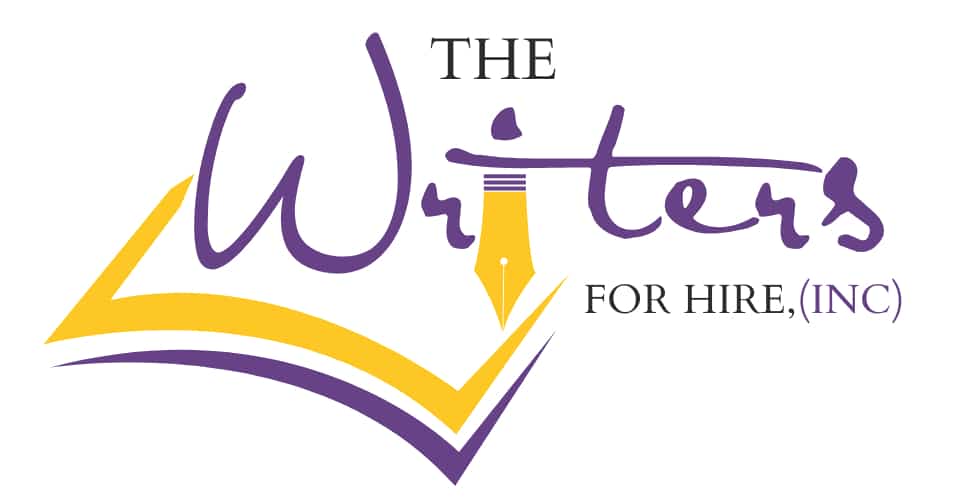The Four Most Common Mistakes in Whitepapers
April 30, 2021
Producing successful whitepapers takes a combination of skill and creativity. It requires a practical approach that can help writers get their message out there and, in turn, provide readers with the information they seek.
However, there are cases in which a whitepaper fails to deliver. When a paper fails, writers may be left wondering what went wrong.
In this article, we focus on the four most common mistakes in whitepapers and how to solve them. By paying attention to this article’s guidelines, producing a successful whitepaper will become far more straightforward.
Mistake #1: A Weak Argument

A useful whitepaper is similar to an ironclad court case. And just as trial lawyers need to create airtight cases so they can prove their argument beyond a reasonable doubt, a whitepaper not only needs to build a logical and consistent argument but also back it up accordingly.
Graham Gordon, whitepaper writer extraordinaire, has this insight to offer on building a successful argument:
“Every white paper writer must learn how to build a coherent argument. Without one, your white papers won’t convince anyone of anything. But a white paper that presents a strong argument can be right on the money. It can generate great results for years running.”
Indeed, the best arguments stand the test of time. Yet, writers are often guilty of committing several mistakes.
The most prominent sin that writers commit when building an argument is to use overly complicated ideas. Some writers misguidedly believe that the more complex an argument is, the more it will succeed.
However, complex arguments tend to have too many moving parts. Thus, each component is an opportunity for competitors to attack its logic and consistency.
On the other hand, a simple argument is much harder to refute. Debunking a simple, well-constructed idea generally requires a mountain of data. While competitors may try, they will eventually give up.
Another hazardous characteristic of a weak argument is assuming that readers already know or understand the argument’s points.
Good trial lawyers walk jurors through every facet of their argument, even if the risk is going over minutiae. In doing so, they avoid leaving gaps in their arguments. After all, even a small gap can become a huge chasm.
For instance, assuming that all shoppers prioritize quality over cost is a dangerous proposition. After all, there might be shoppers that do not care about quality and instead want the cheapest product available regardless of quality.
To combat weak arguments, whitepaper writers must challenge their arguments as rigorously as possible.
Trial lawyers simulate courtroom conditions to test the strength of their arguments. This exercise often reveals cracks in arguments, and most importantly, how to address them. In the same sense, whitepaper writers must become their own critics to ensure they have covered every possible angle.
A telltale sign of a weak argument is the use of generalizations. Blanket statements do very little to push the persuasive nature of an argument. Moreover, generalizations do not provide the reader with any actionable insight.
For example, a statement such as “consumers prefer high-quality products” does not offer any useful information. In contrast, “90% of consumers surveyed indicated they prefer high-quality over low price,” provides an insightful tidbit of information readers can internalize. Consequently, whitepaper writers must always strive to be as specific as possible.
When writing a whitepaper, bear in mind that the devil is in the details. Detailed arguments go a long way toward plugging up gaps in the argument’s overall construction.
Mistake #2: Insufficient Evidence

Whitepapers must base their arguments on concrete evidence. Without the use of enough evidence to support claims, a whitepaper may drift into the realm of opinion.
While there is nothing inherently wrong with publishing an opinion, it is not a whitepaper. A whitepaper serves as a persuasive argument that compels readers to act, or in the most ambitious of cases, change their minds on a specific issue.
The best kind of evidence comes from reliable sources. These sources are individuals acknowledged as experts in their field and official institutions such as government, academia, or industry leaders.
These sources enable readers to trust the information provided in the paper. Citing data from fringe websites, obscure writers, or unknown publications may lead readers to doubt the accuracy of the paper’s data.
Above all, whitepaper writers should strive to present as much quantitative data as possible. Quantitative data encompasses information stemming from surveys, laboratory research, official government statistics, and verified public data. Ultimately, cold, hard numbers go an incredibly long way to support a compelling argument.
Additionally, there is plenty of room for qualitative data. For example, expert opinions on a subject can boost the credibility of a paper’s argument. When multiple experts echo the view presented in a paper, the argument can truly begin to take shape.
Trial lawyers use this same kind of motivation when calling expert witnesses to the stand. Expert witnesses have technical expertise that lawyers do not. Consequently, these witnesses serve to show jurors the argument’s veracity.
Unfortunately, some whitepaper writers commit a fatal error by not presenting sufficient evidence. A good rule of thumb to keep in mind is the more proof, the better.
While there is no specific number of sources that a paper should use, writers should strive to find as many pieces of evidence as possible. Evidence serves to build credibility. Without it, a paper is far easier for critics to dismiss. Conversely, concrete evidence gives any whitepaper the backing it needs to be successful.
Graham Gordon, the Whitepaper Guy, says that the use of sources in whitepapers “elevates the level of discourse in your white paper, and in your industry, to rely more on evidence and less on hype.”
Basing the claims in a paper on evidence provides a solution based on a solid foundation of fact and not merely hot air. Hype can easily get debunked when someone takes the time to do their due diligence. If a competitor wants to get an edge on their competition, they will undoubtedly take the time to check up on the hype.
Graham warns of making up “facts,” though. This statement does not necessarily pertain to falsifying information. It refers to making loose affirmations that appear to be true. However, they do not hold up to scrutiny.
For instance, claiming a specific aggregate market value of a product based on an estimation would be irresponsible to include in a legitimate paper. While it is entirely possible to utilize estimated data, estimates should always use a sound methodology. Making claims on unverified assumptions can quickly bash a paper’s credibility.
Mistake #3: Obscure Sources

There is no question that solid research is the backbone of every compelling whitepaper. However, a paper’s research is only as good as its sources.
Often, writers try to cut corners by citing obscure sources or unknown individuals. In the worst of cases, some whitepapers make significant claims based on a single piece of evidence. A paper could avoid initial vetting/review if it is self-published—say on a website, but that may not shield it from eventual exposure of its flaws.
When it comes to sources, mainstream ones provide the best support. After all, journalistic articles from CNN or The New York Times carry much more weight than ones from thetruthrevealed.com. While it may seem silly to consider that a professional whitepaper writer would use such sources, it should not come as a surprise that inexperienced writers may try to pull a fast one.
At the core of reliable sources of information is trust. There is a proven psychological link between a source and an individual’s ability to trust the data.
Take children, for example. It has been proven that children associate the integrity of information based on its source. This implicit association implies that children are far likelier to trust anything a parent or guardian would say as opposed to a stranger.
The concept of trusting information based on the source remains with most people into adulthood, leading them to take information from trusted sources at face value naturally.
Influential whitepaper writers are keenly aware of the importance of trust. And trust is everything when it comes to writing a persuasive paper. Even when claims sound unbelievable, trustworthy sources, coupled with a consistent argument, are the winning formula to a successful whitepaper.
A clear example of an unreliable source is Wikipedia. Wikipedia is an open-source repository of knowledge and information. Since it is open-source, practically anyone can contribute to a specific topic. However, Wikipedia does not have a rigorous verification methodology like academic journals do. Consequently, there is no guarantee that the information contained in it is genuinely accurate. Thus, readers are left to determine the degree of Wikipedia’s credibility for themselves.
Wikipedia serves as a cautionary tale on the use of obscure sources. Any professional writer will agree that using Wikipedia as an official source will quickly get a paper discredited. Finding credible sources may represent extra work. However, the payoff is certainly worth the additional effort.
Mistake #4: Confirmation Bias

Often, finding the right piece of information to lock down an argument can be complicated. Depending on the nature of the argument, sources may be more or less abundant. And, in some cases, information may not even exist.
In such cases, whitepaper writers may have to produce the information themselves through surveys, statistical modeling, or experimentation.
Ideally, writers should conduct research in such a way that the data makes the argument come to life. Whatever it may be, the data ought to provide the support needed to reinforce the paper’s claims. In particular, data should support the core premise so that it holds up to scrutiny.
In the pursuit of credible information sources, the concept of confirmation bias may come up. Confirmation bias is the “tendency to process information by looking for, or interpreting, information that is consistent with one’s existing beliefs.”
Consequently, confirmation bias skews sources, and most importantly, interpretation of data so that it is consistent with the premise in an argument. It can even lead to instances of twisting facts to suit an argument.
Influential whitepaper writers must be as objective as possible when it comes to fitting data within their arguments. After all, a loose interpretation of information may lead to serious questions about the paper’s overall integrity.
As such, confirmation bias plays a significant role in writing as it tends to give more weight to evidence that supports claims rather than evidence against it.
When writing a persuasive paper, writers must consider all sides of an argument. Like trial lawyers, whitepaper writers need to consider all possible angles of attack. This analysis includes taking sources of information that could contend the paper’s premises. Hence, contradictory information is useful in bolstering an argument.
Consider this situation:
A paper’s premise is that product “A” will help consumers lose weight. The research data shows the product to be effective. However, the same data also indicates test subjects in which the product was ineffective.
A writer showing confirmation bias would take the research data on successful test subjects to prove the product’s validity while discarding information of unsuccessful test subjects. However, doing so would open the door to challenges.
To accurately represent all the argument’s angles, the writer would take the successful and unsuccessful data to prove that the product is mostly effective, despite negative results. Readers would then have the opportunity to judge the effectiveness of the product for themselves.
The example above highlights an essential quality of great whitepapers: transparency.
When writers are transparent in the information they present, it helps build trust and credibility in the paper. These are the hallmarks of all excellent papers.
Renowned German politician Wolfgang Schauble once said, “Reliability is the precondition for trust.”
While these words emerged within a political context, it is easy to extrapolate them into any realm of human interaction. Reliability, as in transparency, is a direct precursor for trust. When a whitepaper builds trust, it catapults its brand into an entirely different league within its industry.
Conclusion
Writing a compelling whitepaper requires authors to do meticulous research to build an ironclad case. The case begins with a logical and consistent argument that has sound reasoning.
Nevertheless, a rational argument is nothing without useful data supporting it. Therefore, writers must find credible sources that can back up claims effectively.
Writers need to take great care not to bend information to suit their purposes. Instead, the data needs to make the argument emerge on its own. Otherwise, confirmation bias may lead to a paper showing contradictions.
Ultimately, a compelling whitepaper must add value to its intended audience. An excellent whitepaper can achieve this when reliable and transparent sources scaffold the claims presented.
The difference between a perfect paper and a terrible one often boils down to the effort put in by writers. There are no shortcuts to an influential paper. That is why putting in the work needed to produce an outstanding paper will lead to great results.































